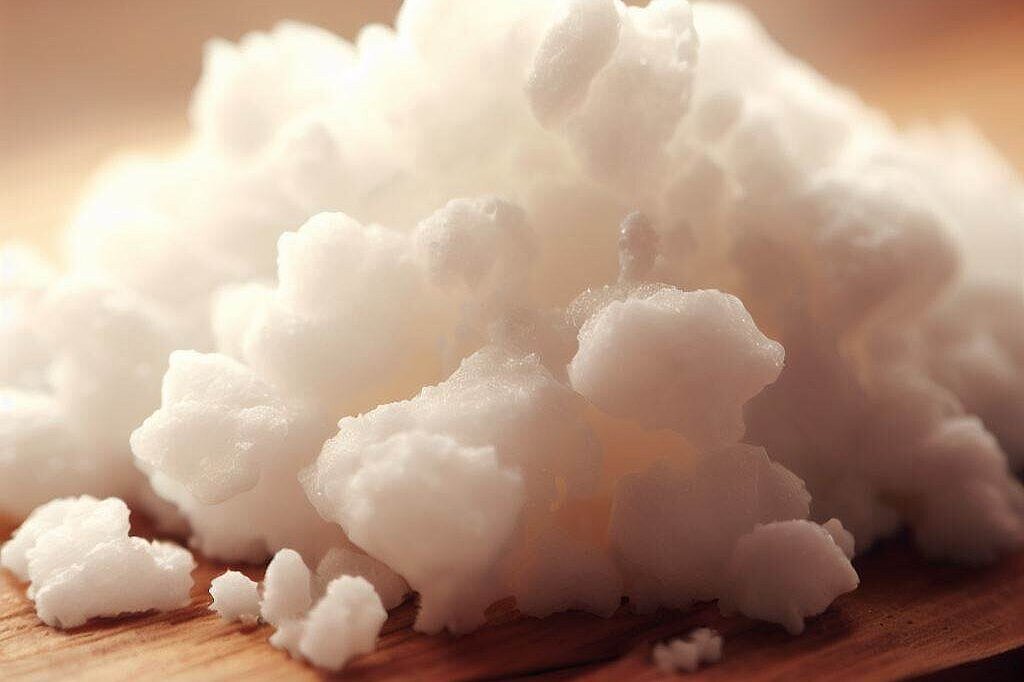Potassium hydroxide

What is potassium hydroxide?
Potassium hydroxide, also known as caustic potash, is a white, odorless solid with the formula KOH. It dissolves in water with great heat development and forms a strong base called caustic potash. Potassium hydroxide also reacts with carbon dioxide from the air and becomes potassium carbonate. It must therefore be stored in airtight containers.
Potassium hydroxide is produced by electrolysis of potassium chloride solutions. It is used, for example, in the production of soaps, dyes or batteries. It can also etch silicon or remove carbon dioxide from gas mixtures.
What are the benefits of potassium hydroxide for dogs?
Potassium hydroxide has several benefits for dogs when used correctly. For example, it can help to rid the skin of parasites, fungi or bacteria by removing the top layer. It can also make hair shinier or neutralize unpleasant odors. Potassium hydroxide can also be used as a disinfectant for wounds or as an emetic in cases of poisoning.
What are the disadvantages of potassium hydroxide for dogs?
However, potassium hydroxide also has some disadvantages for dogs if it is used incorrectly or too much. For example, it can cause severe burns to the skin, eyes or mucous membranes, which can cause permanent damage. It can also cause gastrointestinal discomfort, vomiting, diarrhea or bleeding. Potassium hydroxide can also impair breathing or lead to cardiovascular problems.
How should you use potassium hydroxide for your dog?
Potassium hydroxide is a dangerous substance that should only be used with caution and under the guidance of a veterinarian. You should always wear gloves, goggles and protective clothing when handling potassium hydroxide. You should also make sure that your dog does not come into contact with the substance or swallow it. If this happens, you should consult a vet immediately.
Potassium hydroxide should only be used in diluted form and in small amounts for your dog. For example, you can mix a weak solution of potassium hydroxide with water and a little vinegar and use it to wash your dog's coat. However, you should always make sure that you rinse the solution thoroughly and moisturize your dog's skin afterwards.
Potassium hydroxide is therefore a useful but also dangerous substance for dogs. You should always be well informed and careful before using it.
If you notice any signs of hypersensitivity or poisoning in your dog, you should see your vet immediately. We are not a substitute for a vet, but we try to be as accurate as possible. Every dog reacts differently and we recommend you get a second opinion or consult your vet if in doubt.
Stay healthy and take good care of your four-legged friend!😊
Similar to Potassium hydroxide
Sodium hydroxide is an important raw material in the chemical industry. It is used, for example, to produce soap, paper, plastics and dyes. It is also used to neutralize acids or dissolve other...
Calcium hydroxide is a chemical compound of calcium and hydroxide ions. It has the formula Ca(OH)2 and is also known as slaked lime or quicklime. It is a white powder that dissolves poorly in water....
Magnesium hydroxide can be used for dogs suffering from stomach problems such as heartburn, gastritis or stomach ulcers. It can relieve pain and promote healing. Magnesium hydroxide can also help...
Barium hydroxide is usually obtained from barite (barium sulphate) BaSO4, a mineral that occurs in nature. Barite is heated with coal to form barium sulphide BaS. This then reacts with water to form...



